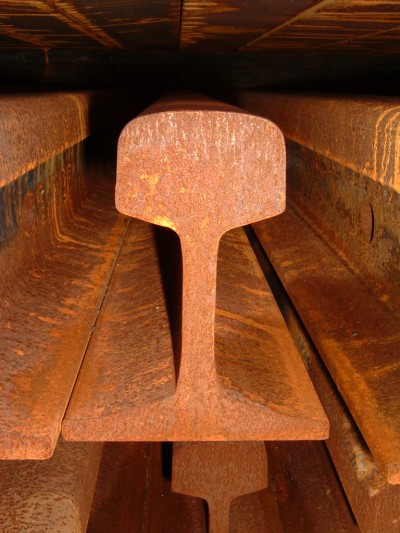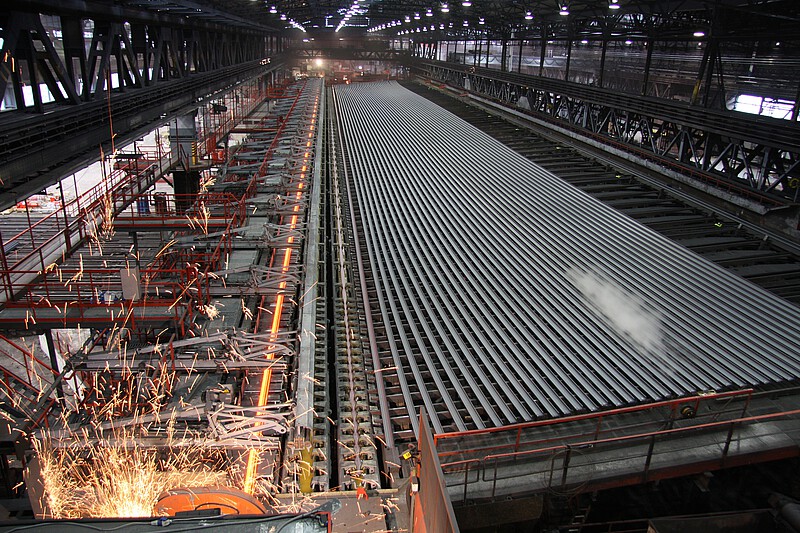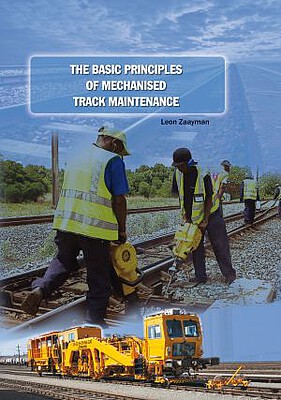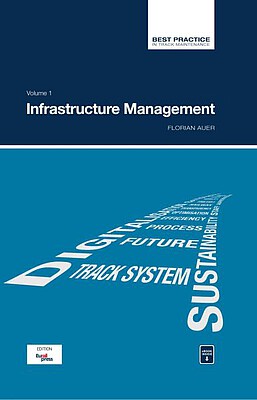Production of rails
Rails are not just steel beams; they are a high-quality and intricately crafted technical product. Because not every kind of steel is the same – rails are mostly made of steel – steel rails have a specific composition of different components to make the rails durable. The quantities of some additives can affect the properties significantly as a lot of research and manufacturing know-how has been put into the development of rails. There is only one thing that all steel rails have in common: they are made of rolled steel, even when the composition of the steel may differ. This was not always the case. In the early days of the railway, rails were made of cast iron which lead to broken rails and other damage.
The importance of rails as "special kinds of steel beams" can be explained with their main functions. Rails build the surface for railway vehicles to run on. On the bottom part of the rail, the rail foot transfers the loading and distributes the load to a bigger surface. Enormous forces can act in all dimensions. Both, in freight transport with high axle loads and in high-speed train traffic with very dynamic loads. Severe vertical forces act when a train runs around a curve. Even today, some tram systems have curves with radii lower than 15 m and in the railway sector curves can be found with a radius as small as 300 m. Of course, wear resistance and long life of the rails are of great importance, because rails must neither break nor be too soft. In spite of a comparatively minimal contact area of the wheels on the running surface of the rails, a frictional connection must be obtained without leaving any traces in the structure and surfaces. It must be possible to grind, plane or mill the running surface in order to allow reprofiling on several occasions, also build-up welds shall be provided where appropriate. For tramways curved rails must be pre-bent.[1]
To make rails, it is first necessary to make pig iron. For this, iron ore with lime and coke is heated under a constant supply of fresh air in the blast furnace to over 1,500 °C. The results are the products pig iron and slag. Pig iron is not suitable as a construction material but is the starting material for the production of steel. It must still be desulphurised. Steel is produced in a second step through the so-called refining process with pure oxygen. The carbon content is reduced from about 4 % to a maximum of 1.5 %. Other additives determine the subsequent material properties. Rail steel which is alloyed in this way is composed of a complex mixture of various chemical elements. Some are added, other substances – in particular those that make it more brittle – are safely removed by the refining process.
The unwanted iron products which have a special affinity for oxygen are then deposited as slag. The "oxygen blowing procedure” which is normal today, was introduced in 1949 (LD steel, Linz-Donawitz process [VOEST]) and is a very economical way to make a high-quality, low contamination steel[2] and the electrical steel procedure with arc melting. The addition of a significant proportion of scrap metal to the steel melt is also common. The entire production process ensures a pure, homogeneous material with precisely defined properties. Deutsche Bahn, for example, requires a minimum tensile strength of 880 N/mm2. According to DIN EN 10027, rail steels are designated with the letter R.
The still molten steel is poured into moulds ("slab", "continuous casting plant", "vacuum casting") or into special ladle wagons while still liquid so that it can be moved for further processing. For rails from the hot-rolling process, this might include 20 rolling operations until the desired profile is achieved. Rail steel can be rolled at a temperature of about 1,250 °C. This temperature must be retained during the rolling process in order to achieve a homogeneous structure. Profile, rolling mill (producer) and year of production can be read on the rail web as raised "Rolling marks", which have a long tradition. The standard length of finished rolled rails is now 120 m. Lengths of 180 and even 360 m are also possible, they are produced by welding the rolled profiles together.
The finished rolled rail must cool down in a controlled way after the rolling process in order to avoid damaging internal stresses and coarse structure. A bending is, however, allowed. It will be corrected with roller straighteners at about 50 °C. In addition, it is advisable to carry out ultrasonic testing to detect any production errors, otherwise, voids and cavities in the material may have unforeseeable consequences if the rail fails at a later date. The resulting so-called rolled skin produced in the production process protects the rail completely. On the running surface it is only eliminated after installation – mostly by grinding.
You can find suitable specialist literature to the topic here:
The Basic Principles of Mechanised Track Maintenance
This book is dedicated to the many people involved in the day to day planning and performance of track maintenance activities. Providing a practical approach to everyday challenges in mechanised track maintenance, it is not just intended as a theoretical approach to the track system.
Railways aim at transporting people and freight safely, rapidly, regularly, comfortably and on time from one place to another. This book is directed to track infrastructure departments contributing to the above objective by ensuring the track infrastructure’s reliability, availability, maintainability and safety – denoted by the acronym RAMS. Regular, effective and affordable track maintenance enable RAMS to be achieved.
Best Practice in Track Maintenance, Vol 1 - Infrastructure Management
Infrastructure Management Volume 1 looks at aspects of infrastructure management with particular reference to the single European railway area. Based on best-practice examples from Central Europe, measures for the targeted retrofitting and improvement of the infrastructure maintenance of the existing network are presented. In many cases, infrastructure operators are faced with a generational change, which accelerates the process. Modern information and communication technology can simplify the comprehension and presentation of complex contexts. Modified approaches to asset management and life-cycle management enable implementation of the "transparent permanent way" or the "railway 4.0".




